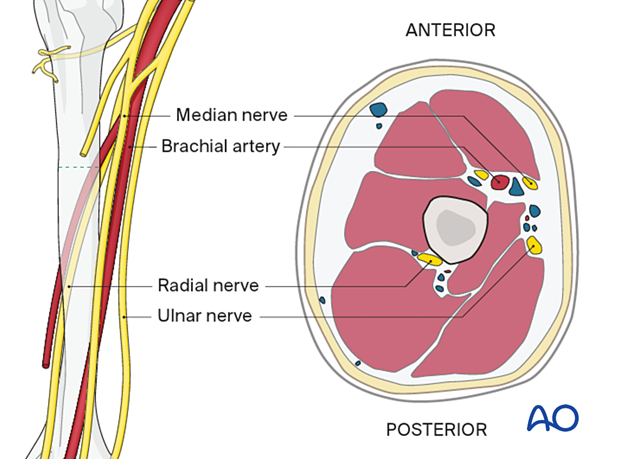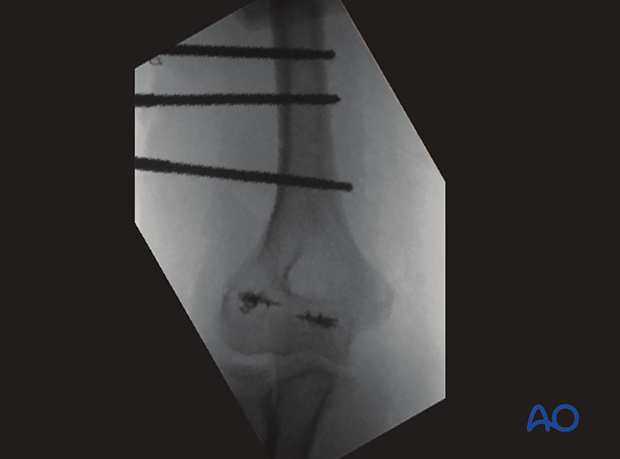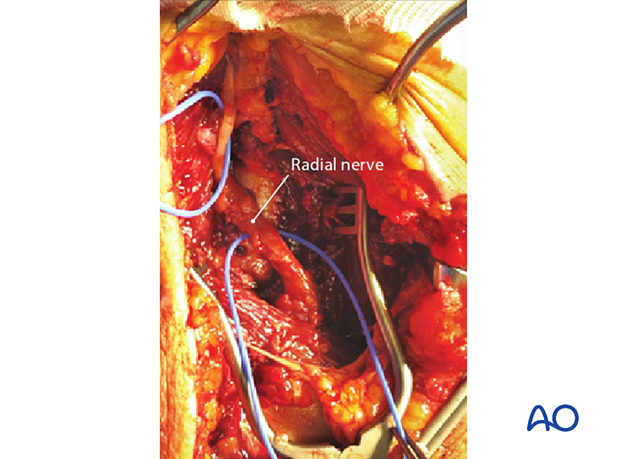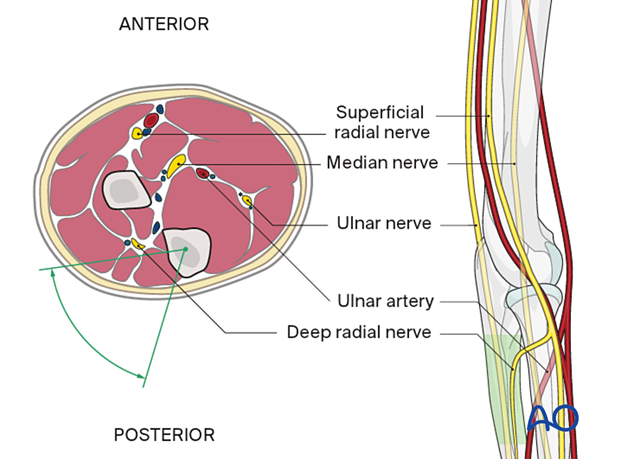Safe zones in the humerus for percutaneous pins or screws
1. Introduction
In the humerus, there is a high risk of nerve injury by percutaneous pin placement. A mini-open technique for pin placement is recommended, particularly around the elbow.
2. Pin placement in the middle third of the humerus
It is not safe to place the pins percutaneously in the humerus.
If pin placement is necessary, the radial nerve must be identified and protected before drilling and pin insertion.
The humeral pins may be inserted in the region of the deltoid insertion zone to avoid the radial nerve.
If a pin needs to be placed more distally, it should be inserted from the posterolateral aspect of the humeral shaft.

This case shows a patient with a radial nerve injury caused by fixator pins.

This intraoperative photo shows the radial nerve in continuity but tethered in scar close to where the pins had been placed. Two of the holes can be seen beneath the radial nerve.

3. Safe zone in the proximal forearm
In the forearm, the pins are placed into the ulna.
Insert pins into the lateral or posterolateral part of the proximal or middle third of the ulna.
It is a subcutaneous bone and therefore easily palpable. Check pronation and supination after insertion to make sure the Schanz screw does not impinge the radius.













